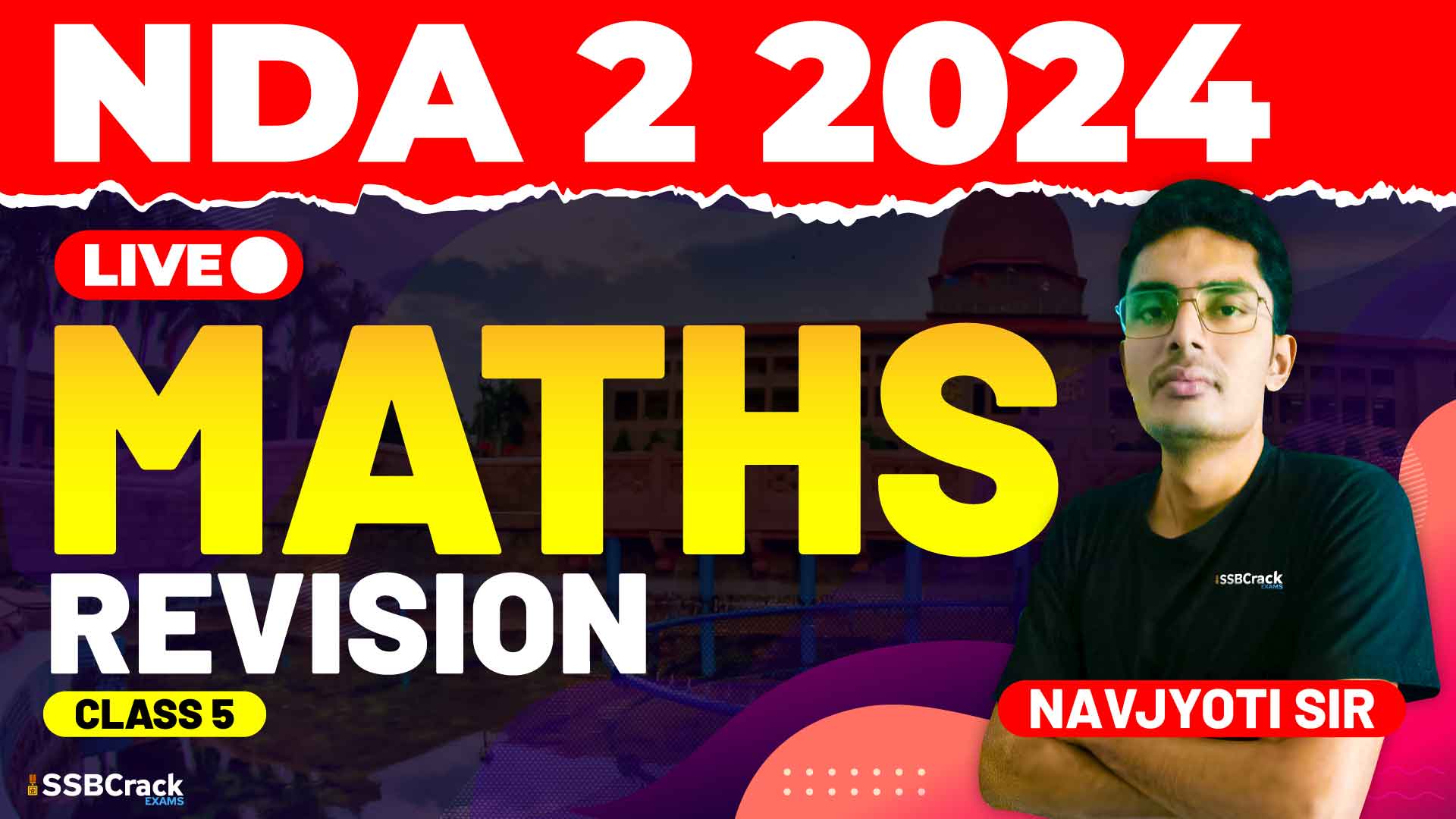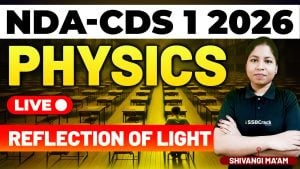Preparing for the NDA-NA Exam requires a strategic approach, especially when tackling the Mathematics section, which is crucial for success. The recent class focused on Analytical Geometry of 2-Dimensions and Vector Algebra, key topics that hold significant weight in the exam. This article will highlight the essentials of these topics and provide strategies to solve multiple-choice questions (MCQs) effectively, ensuring you’re well-prepared to excel.
Analytical Geometry of 2-Dimensions
1. Straight Lines:
- Understanding the Basics: Straight lines form the foundation of Analytical Geometry. Familiarize yourself with different forms of equations of a line such as slope-intercept, point-slope, and general form. Knowing how to find the slope, intercepts, and angle between two lines is essential.
- Focus on Properties: Grasp key concepts like parallel and perpendicular lines, distance from a point to a line, and the condition for concurrency of lines. These are frequently tested in the exam.
- MCQ Strategy: Often, questions will test your ability to quickly find the equation of a line given certain conditions or to analyze the relationship between lines. Practice time management by solving these questions under timed conditions.
2. Circles:
- Equation of a Circle: Understand the standard form of the equation of a circle and how to derive it from given conditions. Be comfortable with converting general forms into standard forms.
- Geometric Properties: Focus on the properties such as the length of the tangent, power of a point, and conditions for tangency. Questions often revolve around these properties.
- MCQ Strategy: Practice problems involving circles that require you to find the equation of a tangent or normal or to solve problems involving two circles.
3. Parabola:
- Key Characteristics: Learn the standard form of a parabola’s equation and understand its vertex, focus, directrix, and axis. Knowing how to derive these properties quickly will save time in the exam.
- Problem Areas: Focus on problems related to finding the equation of a parabola given certain conditions, or determining the properties of a parabola given its equation.
- MCQ Strategy: Practice converting the general quadratic equation to its standard form and identifying the parabola’s key elements swiftly.
4. Hyperbola:
- Standard Form and Properties: Understand the standard forms for both horizontal and vertical hyperbolas. Grasp the concepts of asymptotes, transverse axis, and conjugate axis.
- Intersection with Other Curves: Often, questions may involve the intersection of a hyperbola with other curves. Practice these types of problems extensively.
- MCQ Strategy: Focus on solving problems related to the properties of hyperbolas, such as finding asymptotes and dealing with eccentricity.
5. Ellipse:
- Standard Equations: Familiarize yourself with the standard form of the ellipse equation and the concepts of major and minor axes, foci, and eccentricity.
- Properties and Applications: Practice questions involving the geometric properties of ellipses, especially those that ask for the length of the latus rectum or the equation of the auxiliary circle.
- MCQ Strategy: Prioritize solving problems where you must derive or apply the properties of ellipses, as these are common in the exam.
Vector Algebra
1. Basics of Vectors:
- Understanding Vectors: Grasp the concept of vectors in both 2D and 3D, focusing on vector addition, scalar multiplication, and position vectors.
- Dot and Cross Product: Be thorough with these operations as they form the basis for many complex problems involving vectors.
- MCQ Strategy: Pay special attention to problems that require you to apply vector operations to solve geometric problems or to find angles between vectors.
2. Applications in Geometry:
- Vectors in Geometry: Understand how vectors are used to solve geometric problems, such as finding the equation of a line or a plane in vector form.
- Problem Solving: Practice problems involving vector representation of lines and planes, and how to calculate distances using vectors.
- MCQ Strategy: Focus on vector problems that involve geometric interpretations, as these are commonly tested.
3. Scalar Triple Product:
- Volume Calculations: Learn how to use the scalar triple product to find the volume of parallelepipeds and tetrahedrons.
- MCQ Strategy: Practice questions where you apply the scalar triple product, especially those involving vector geometry in three dimensions.
Strategies for Solving MCQs
- Time Management:
- Prioritize Simple Questions: Begin by solving the simpler MCQs that require direct application of formulas or basic concepts. This will build confidence and secure marks quickly.
- Skip and Return: If an MCQ seems complex, skip it and return later. Avoid getting stuck on one problem for too long.
2. Elimination Method:
- Narrow Down Choices: Use the process of elimination to remove obviously incorrect answers, increasing your chances of selecting the correct one.
- Check Units and Dimensions: Often, checking the consistency of units or dimensions can help eliminate wrong answers.
3. Practice and Repetition:
- Daily Practice: Regularly practice MCQs from previous years’ papers and mock tests to become familiar with the question patterns and difficulty levels.
- Review Mistakes: After solving practice MCQs, spend time reviewing incorrect answers to understand where you went wrong and how to correct it.
4. Understand the Concepts:
- Conceptual Clarity: Ensure you understand the underlying concepts rather than just memorizing formulas. This will help you solve problems that are framed differently from what you’ve practiced.
- Application-Oriented Learning: Focus on how each mathematical concept is applied in problem-solving, especially in Analytical Geometry and Vector Algebra.
5. Stay Updated:
- Exam Trends: Stay updated on the latest exam trends and types of questions asked in the NDA-NA Mathematics paper. This will help you tailor your preparation accordingly.
- Regular Revisions: Revisit key concepts and problem-solving strategies regularly to keep them fresh in your mind.
Conclusion
By mastering the topics discussed and applying these strategies, you will be well-equipped to tackle the Mathematics section of the NDA-NA Exam. The key is consistent practice, understanding the concepts thoroughly, and approaching MCQs with a clear strategy. Good luck with your preparation!


















